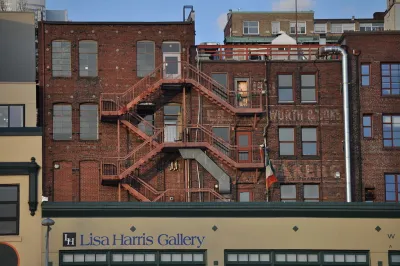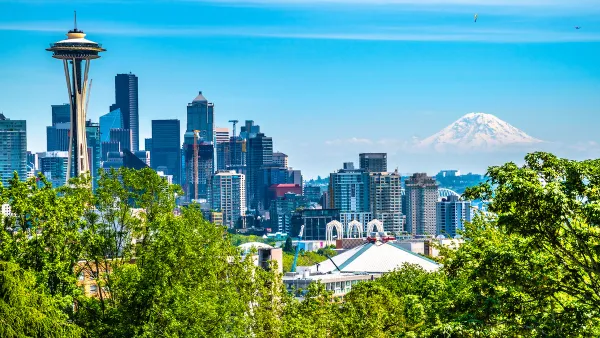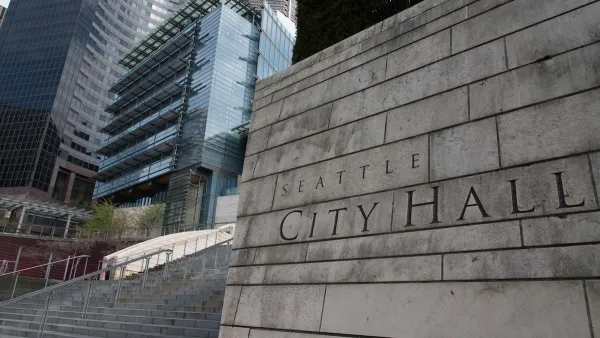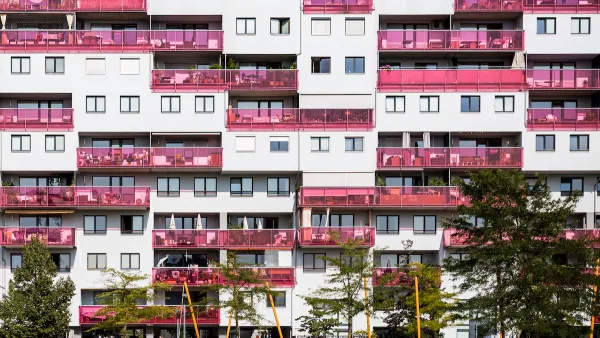Seattle trails international peer cities in its social housing stock, but there are steps city leaders can take to produce more units and increase affordability.

Doug Trumm reports on Seattle's limited progress in creating more social housing, defined as "several forms of affordable housing including public housing, nonprofit housing, and rent-restricted homes in market-rate buildings offered via incentive programs like inclusionary zoning." Trumm points to peer cities around the world where social housing is a major part of housing policy. Singapore's social housing comprises 80% of housing stock; in Vienna, that number is 60%. Famously expensive Paris is on track to have 30% social housing by 2030. In Seattle, social housing comprises just 8.6% of housing stock, a number not projected to increase much.
Building more social housing, Trumm argues, " would combat displacement and shrink commutes for working class people, who keep the city functioning and culturally vibrant," and "engender mixed-income neighborhoods rather than Seattle slipping into a one-class city of the rich." This sentiment is echoed by Paris mayor Anne Hidalgo, whose statement that "everyone should have the possibility to live in Paris" has guided city policy during her administration.
According to Trumm, Seattle has the opportunity to build more social housing through the Seattle Housing Levy, the city's Mandatory Housing Affordability (MHA) program, and a variety of tax programs aimed at promoting housing density and producing revenue for housing projects. "The benefits of social housing are significant and setting an ambitious social housing target isn’t about bragging rights. It’s about making Seattle a better city and increasing quality of life for all people, not just the rich." Once freed from excessive rent burdens, Trumm writes, "working class folks would pump money into the economy, invest in education, business ventures, cultural creation, and their personal wellbeing."
FULL STORY: Growing Social Housing in Seattle

National Parks Layoffs Will Cause Communities to Lose Billions
Thousands of essential park workers were laid off this week, just before the busy spring break season.

Retro-silient?: America’s First “Eco-burb,” The Woodlands Turns 50
A master-planned community north of Houston offers lessons on green infrastructure and resilient design, but falls short of its founder’s lofty affordability and walkability goals.

Delivering for America Plan Will Downgrade Mail Service in at Least 49.5 Percent of Zip Codes
Republican and Democrat lawmakers criticize the plan for its disproportionate negative impact on rural communities.

Test News Post 1
This is a summary

Test News Headline 46
Test for the image on the front page.

Balancing Bombs and Butterflies: How the National Guard Protects a Rare Species
The National Guard at Fort Indiantown Gap uses GIS technology and land management strategies to balance military training with conservation efforts, ensuring the survival of the rare eastern regal fritillary butterfly.
Urban Design for Planners 1: Software Tools
This six-course series explores essential urban design concepts using open source software and equips planners with the tools they need to participate fully in the urban design process.
Planning for Universal Design
Learn the tools for implementing Universal Design in planning regulations.
EMC Planning Group, Inc.
Planetizen
Planetizen
Mpact (formerly Rail~Volution)
Great Falls Development Authority, Inc.
HUDs Office of Policy Development and Research
NYU Wagner Graduate School of Public Service





























